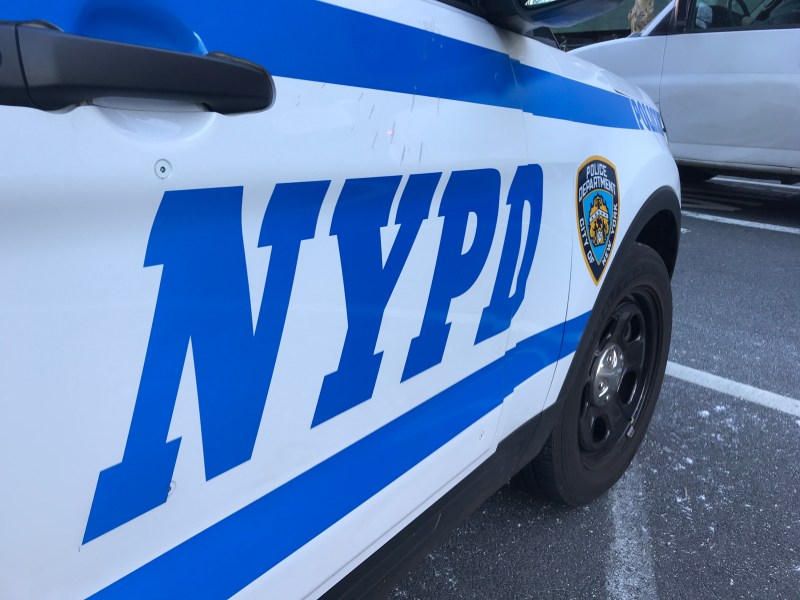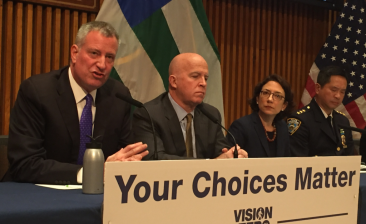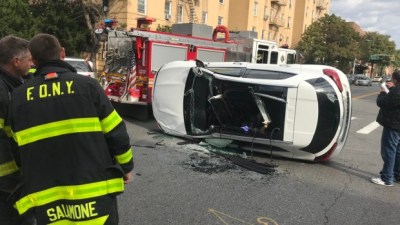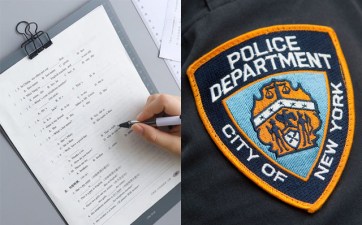In Wake of Council Hearing, Mayor Now Wants to Expand NYPD Collision Investigations

Suddenly the mayor wants to expand the NYPD unit that investigates crashes.
In the wake of a city council hearing last week to determine the fate of the NYPD’s Collision Investigation Squad — which the council wants to transfer to the Department of Transportation and then expand — Mayor de Blasio on Wednesday announced that he supports only the expansion part, a policy his own NYPD denounced two years ago and again last week.

“We need to do more to investigate crashes because we need more consequence for crashes,” the mayor said on Wednesday. “So, yes, we should expand that capacity.”
It’s a key policy shift for the mayor. In 2019, then-Police Commissioner James O’Neill refused to take $2 million being offered by the Council to add 15 detectives to the 22-detective CIS. At the time, he said the CIS has enough staff to do the job — though it only investigates a few hundred of the tens of thousands of crashes every year that cause injuries.
At last week’s hearing, NYPD officials again said the CIS is sufficiently staffed to do the job it is asked to do — i.e. only investigate fatal crashes and crashes with the serious injuries (point of fact: the agency does not even get to all of those, which number in the thousands every year).
But the mayor’s comments about a possible expansion came as a result of his administration’s success in pushing back on the main thrust of the council’s bid to move the CIS into the DOT. At the hearing, the NYPD, all five District Attorneys, and DOT Deputy Commissioner Margaret Forgione described the council bill as a non-starter because, they claim, state law requires police officers to collect evidence at potential crime scenes — though others argue that civilians could easily be empowered to perform such work, too. (And, indeed, the Office of the Chief Medical Examiner could do that job without the NYPD’s alleged biases.)
That’s how Streetsblog framed the question on Wednesday, asking the mayor if he was comfortable with what could become the Council’s fallback position — a compromises to keep the CIS within the NYPD but to add in some more involvement for DOT and to expand the unit itself (an irony, given how many members of the Council support the larger goals of the “Defund the Police” movement).
“There also have to be more thorough investigations to achieve prosecutions when there needs to be prosecutions,” the mayor said. “And, simultaneously, we need to investigate crashes to figure out what we need to do differently in terms of street design, which is a central tenet of vision zero, which I brought to the city in 2014.”
https://twitter.com/schmangee/status/1367181608575500289
The mayor said he felt the city would be able to come up with the money, despite the COVID pandemic (though the city was flush two years ago when the NYPD turned down a mere $2 million).
“Historically, the question is always resources and other challenges,” he said. “My hope now … is that we actually will be made pretty whole by the federal government with the stimulus. And continuing to deepen Vision Zero is a central central need.”
None of the three Council sponsors of the bill — Ydanis Rodriguez, Brad Lander and Steve Levin — wanted to address the mayor’s comments, but Speaker Corey Johnson, who also supports the bill, was firm in pushing back on the narrative that the council is going to fold on the issue.
“It’s good to see the mayor finally agrees we need to put more resources into crash investigations, but given the NYPD’s consistent failure to take this responsibility seriously, the Council continues to firmly believe that those additional resources should be directed to DOT, an agency that can help the city make real progress toward ending traffic violence by making design changes to prevent them from happening again,” Johnson said in a statement to Streetsblog. “We urge the mayor to work with us on finalizing this important piece of legislation, which will reduce NYPD’s footprint in the city without limiting the police or District Attorneys’ ability to pursue criminal enforcement against reckless drivers.”
Activists seemed willing to meet the mayor halfway.
“There are many reasons why crash investigations must be centralized outside DOT to also include DOT and the Department of Health and Mental Hygiene,” said Marco Conner DiAquoi, the deputy director of Transportation Alternatives, which has put forward its own proposal last year to give DOT more control over crash investigations. “But until that is accomplished, we are encouraged that the mayor is open to increasing capacity for CIS to do their job for crash victims. An increase in funding — which the NYPD notably declined in the past — could make a real difference.”
Connor DiAquoi added that the mayor must also “ensure a pathway for physical redesigns at crash locations” as an additional reform.
Bernadette Karna, who is a strong supporter of moving the CIS to the DOT because of how poorly she and other victims of road violence have been treated by the NYPD, said that she and other members of Families for Safe Streets still want the bill to pass so that the CIS is reformed.
“After I was run over by a reckless driver, the NYPD’s Crash Investigation Squad failed to do their job, that is why I still strongly support moving crash investigations from NYPD to DOT,” she told Streetsblog. “If the mayor is going to … expand the CIS’s capacity, it must come with a top-to-bottom overhaul of their process. We must ensure victims achieve accountability, and are not retraumatized by the negligence or pro-driver bias of the NYPD.”
The mayor’s comments said nothing about truly reforming the CIS, which is exactly what another expert, Charles Komanoff, pounced on. Komanoff still believes in the importance of wresting the CIS from the NYPD on the grounds that the DOT would produce better reports.
He focused on two “aspects of CIS dysfunction that are of greatest concern” that were nonetheless left out in the mayor’s answer:
“CIS investigations could teach us about driver (and victim) behavior, not just street design,” Komanoff said. And the DOT would be more likely to “share/publish the investigations instead of leaving them in the file cabinets.”
“Without those two changes, expanding the number of crash investigations isn’t going to do much for street safety,” he said.




